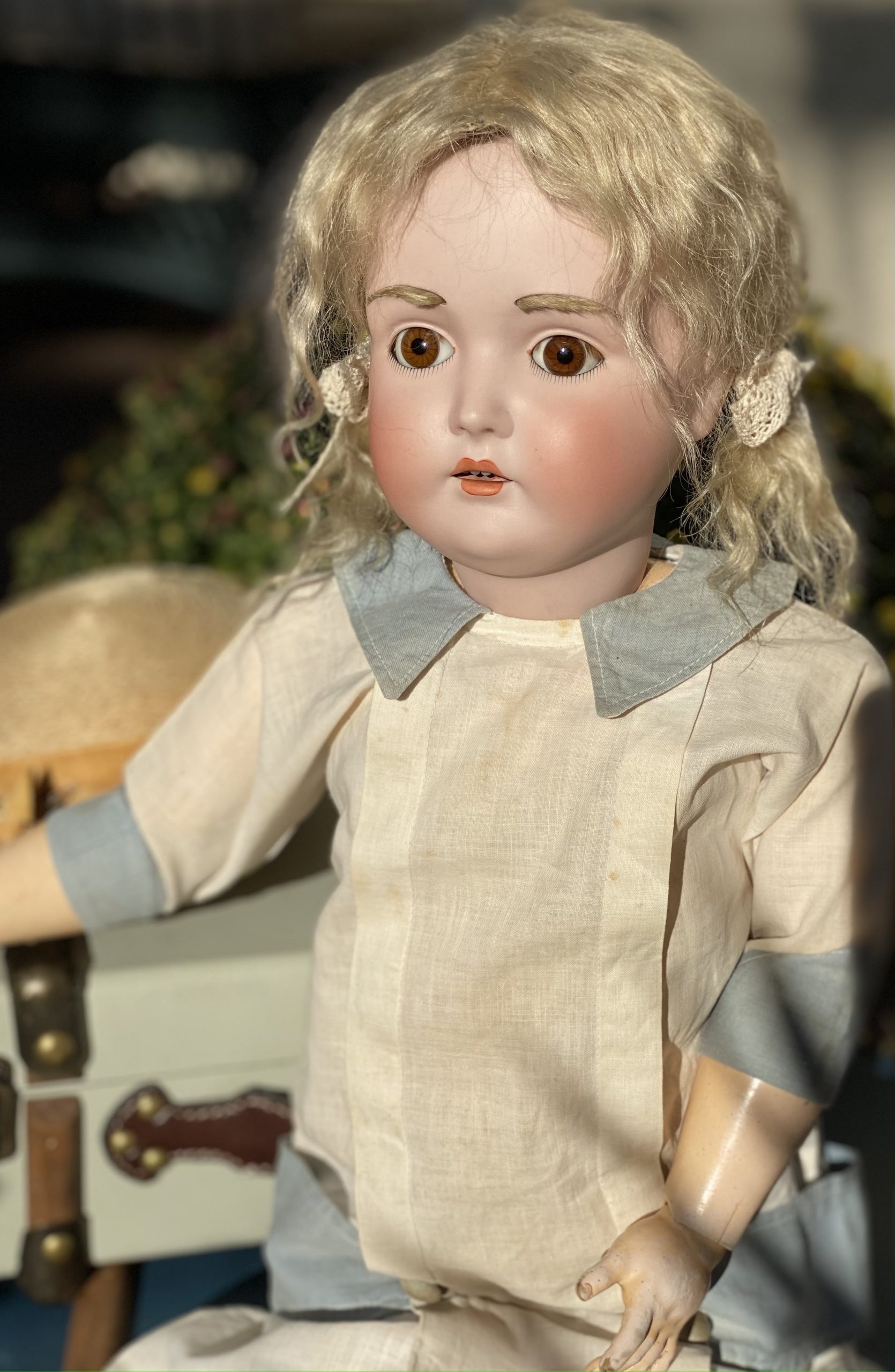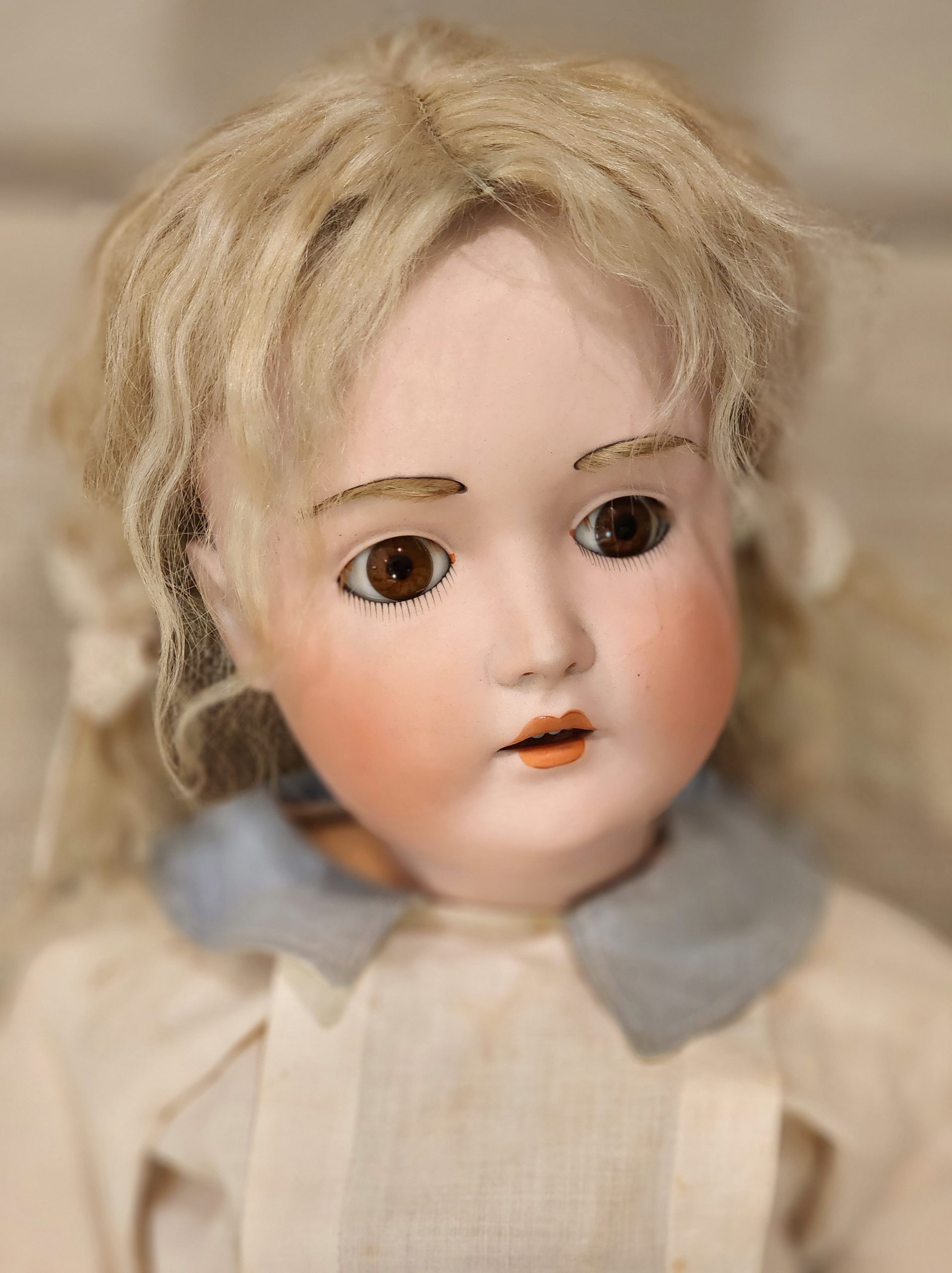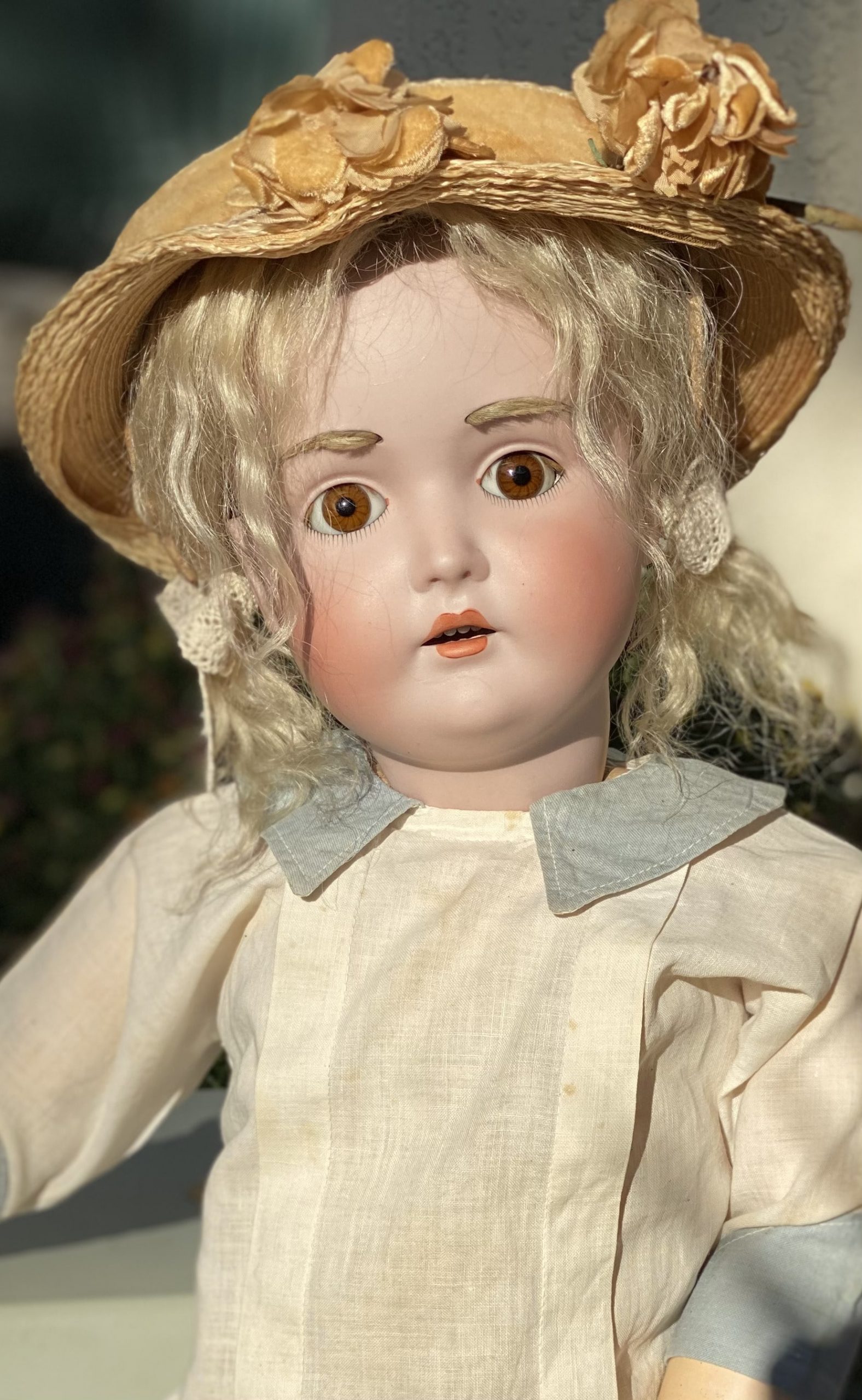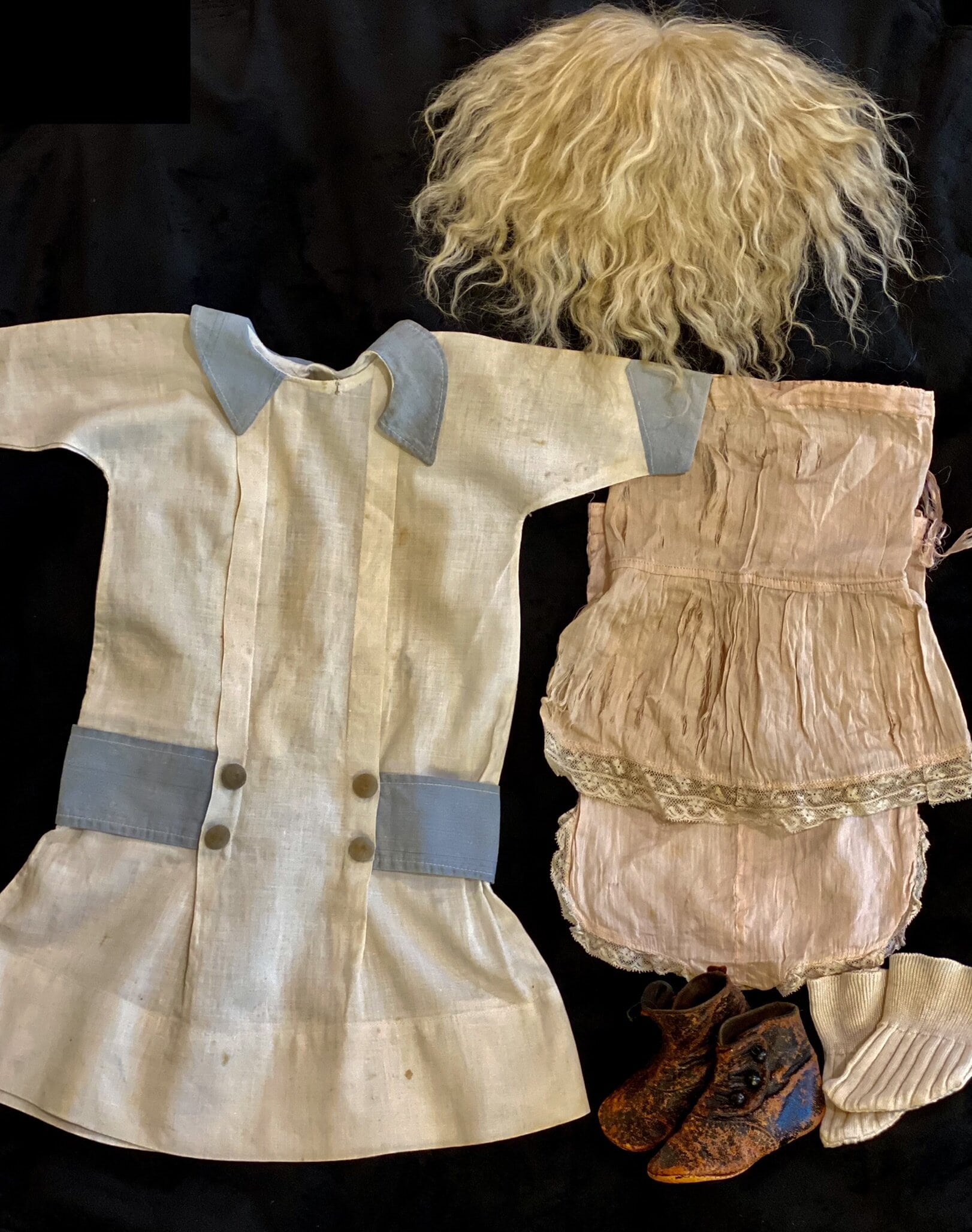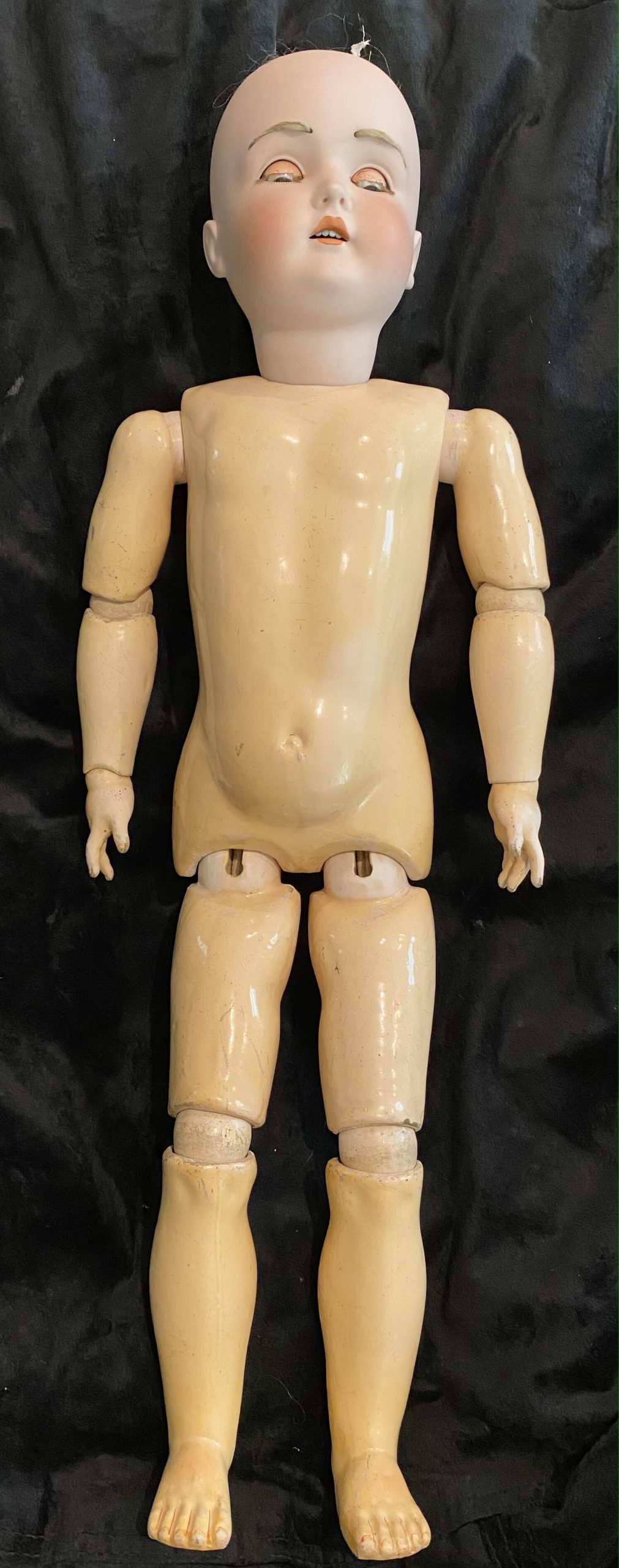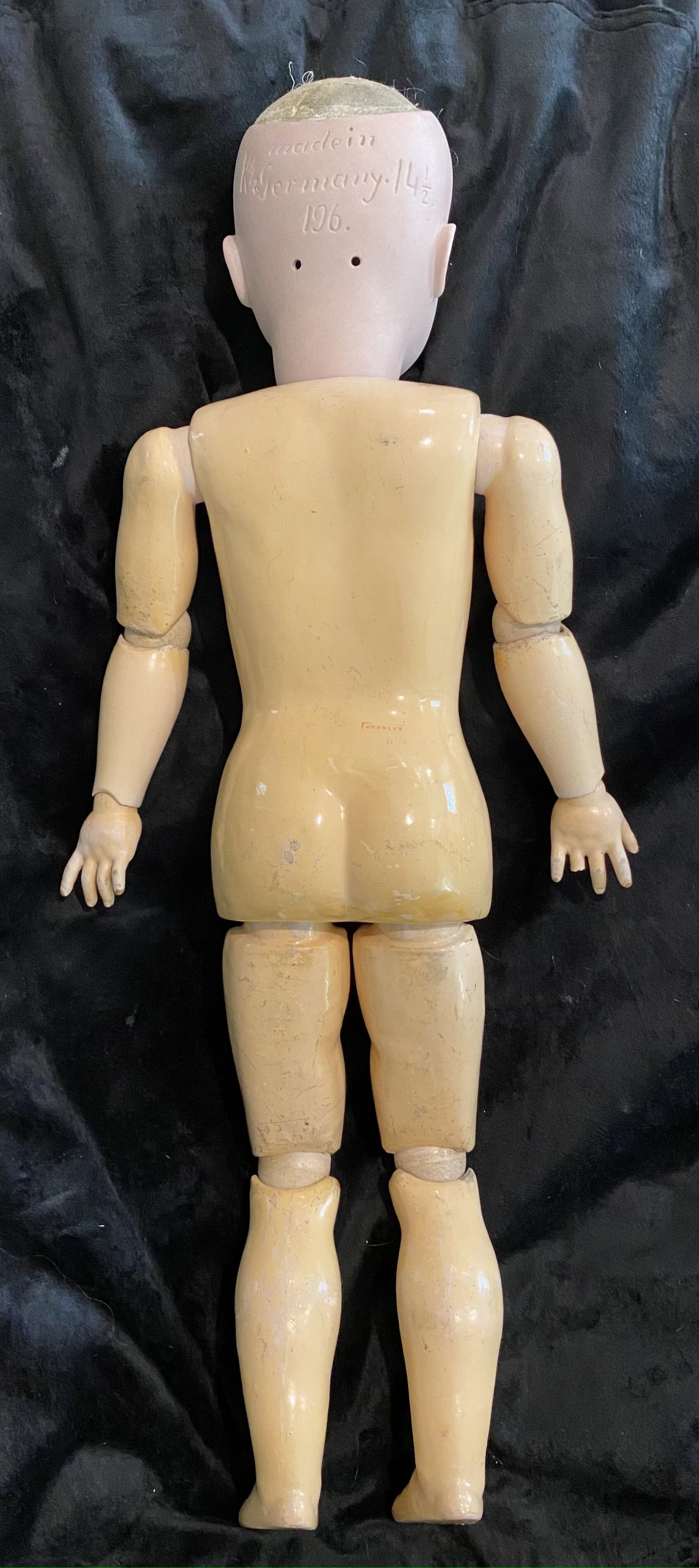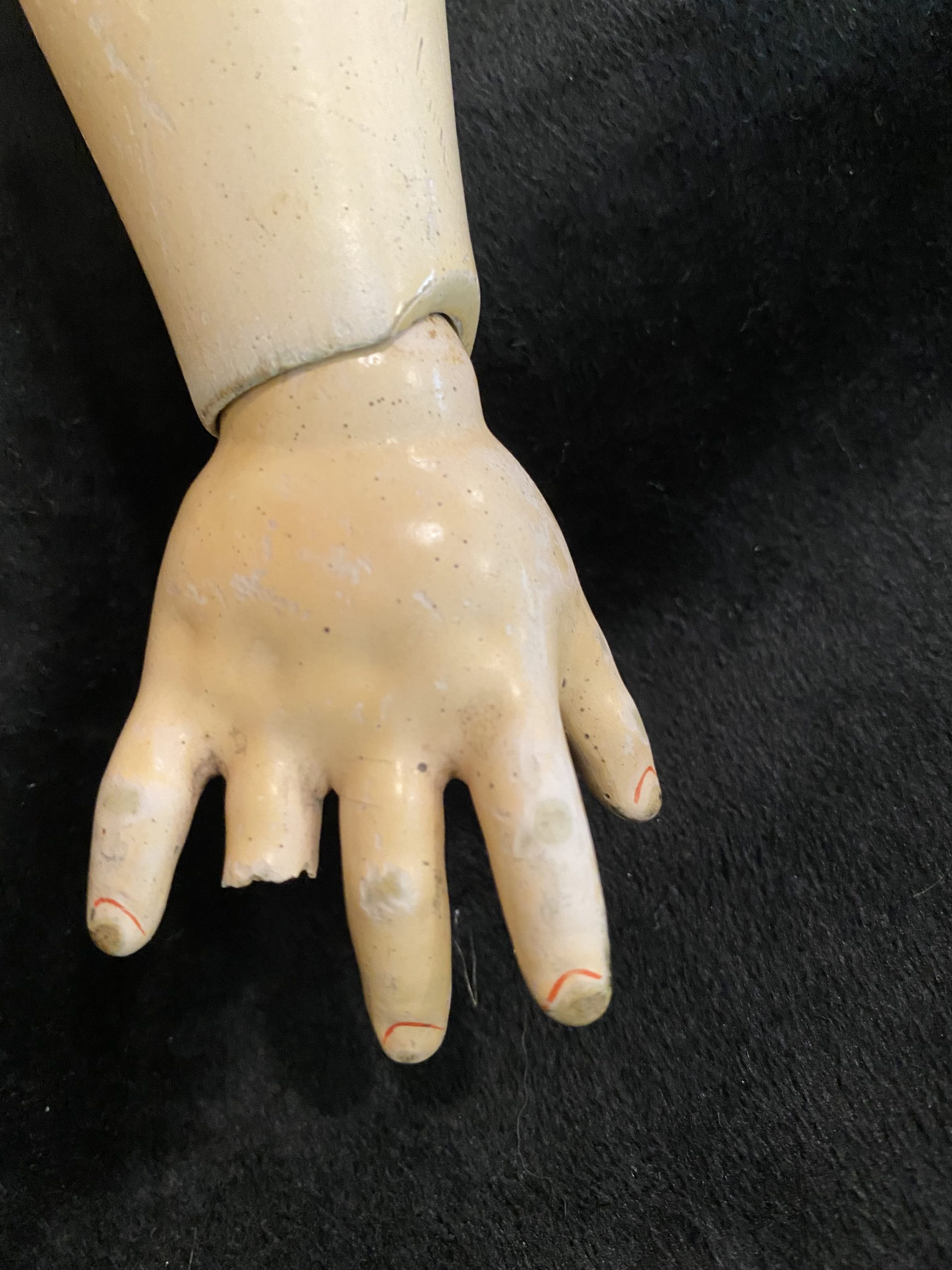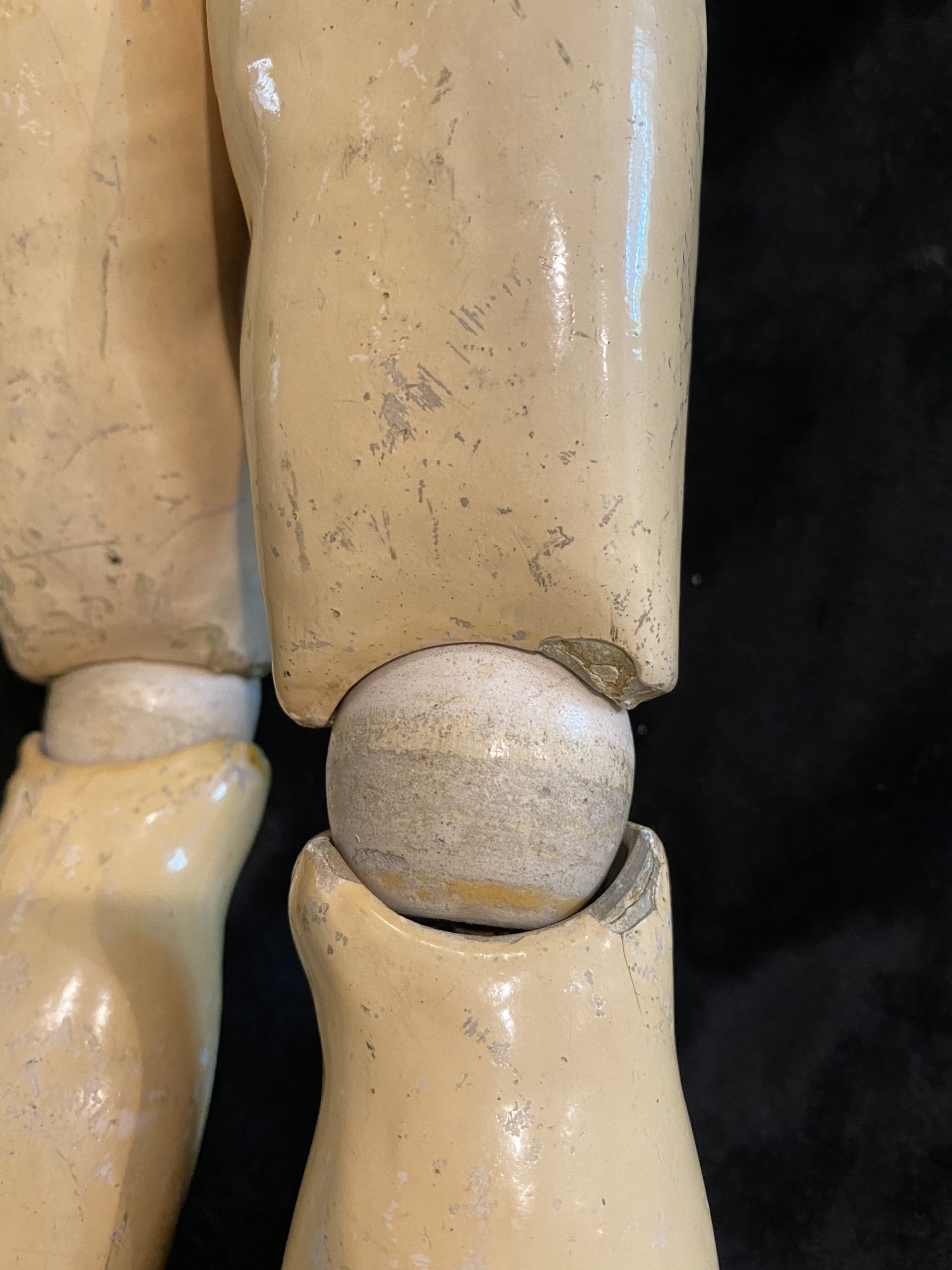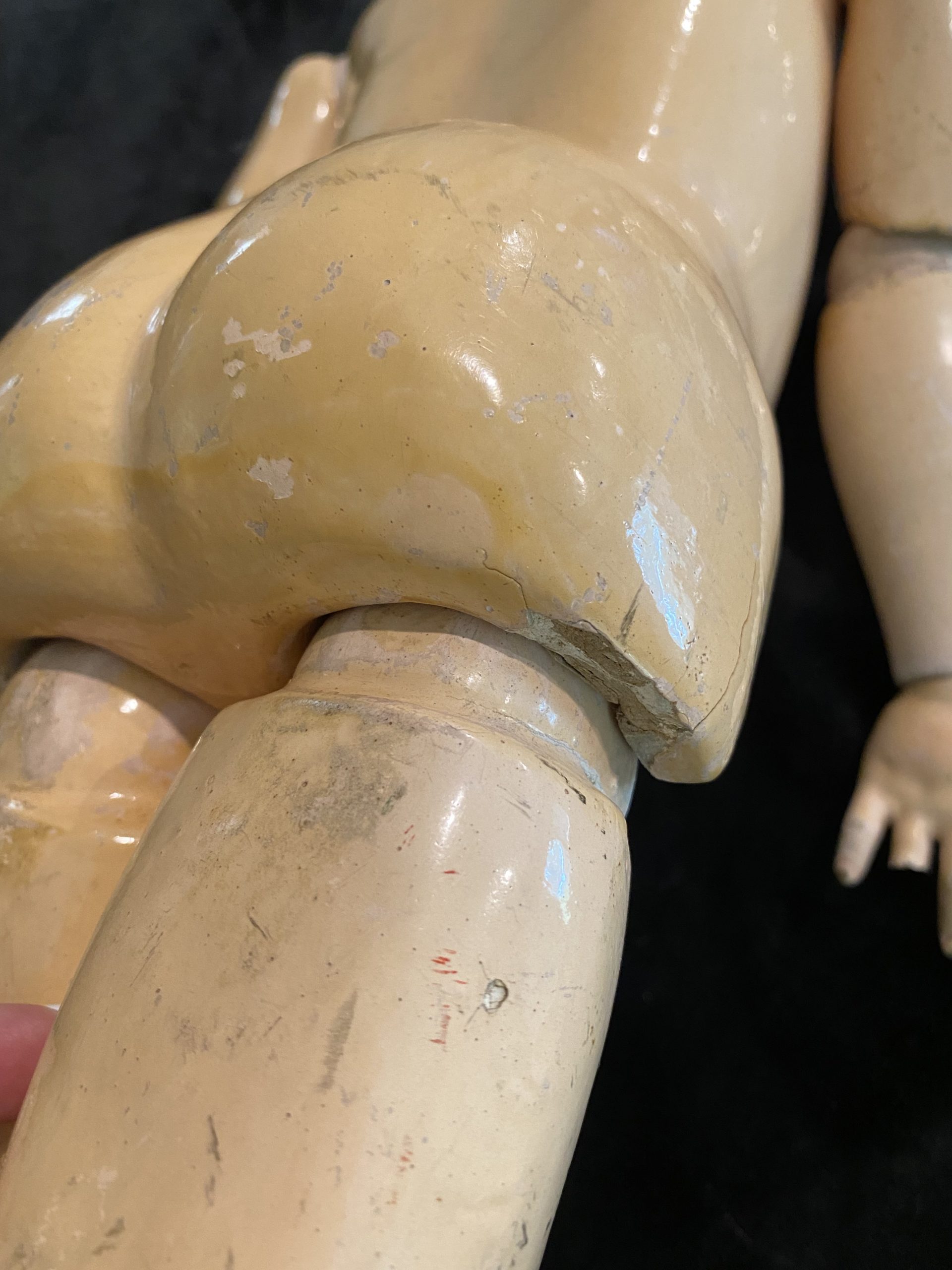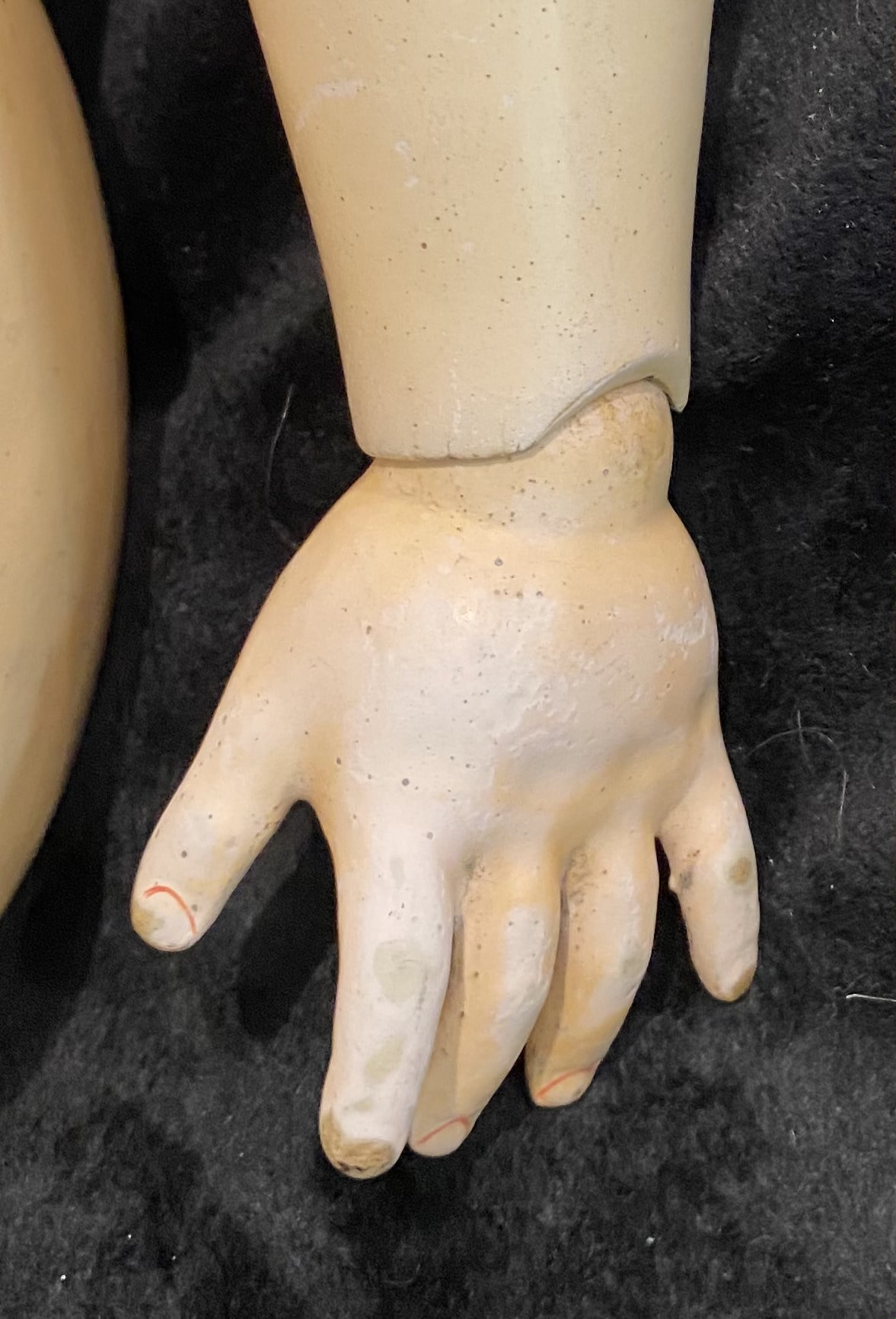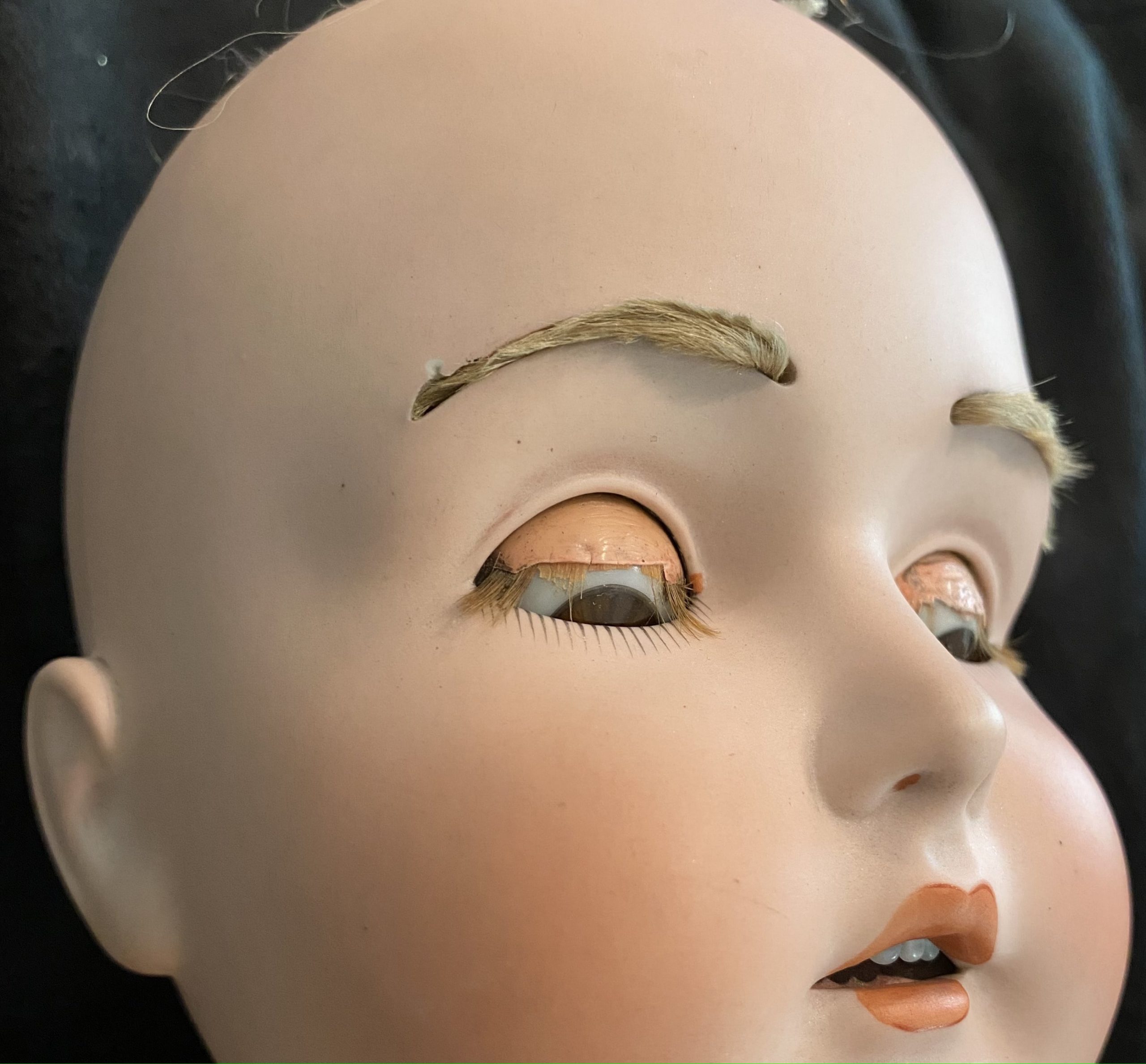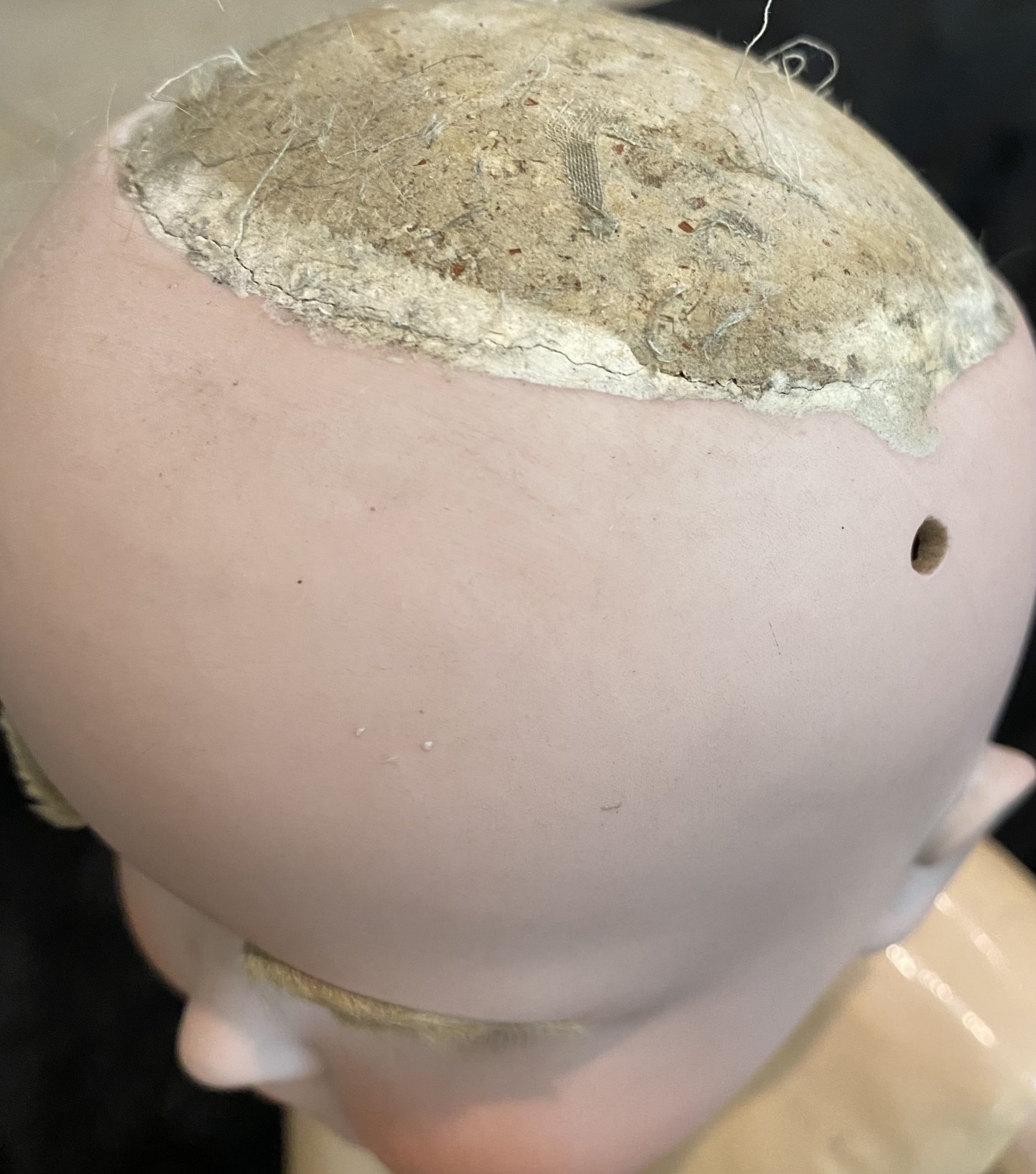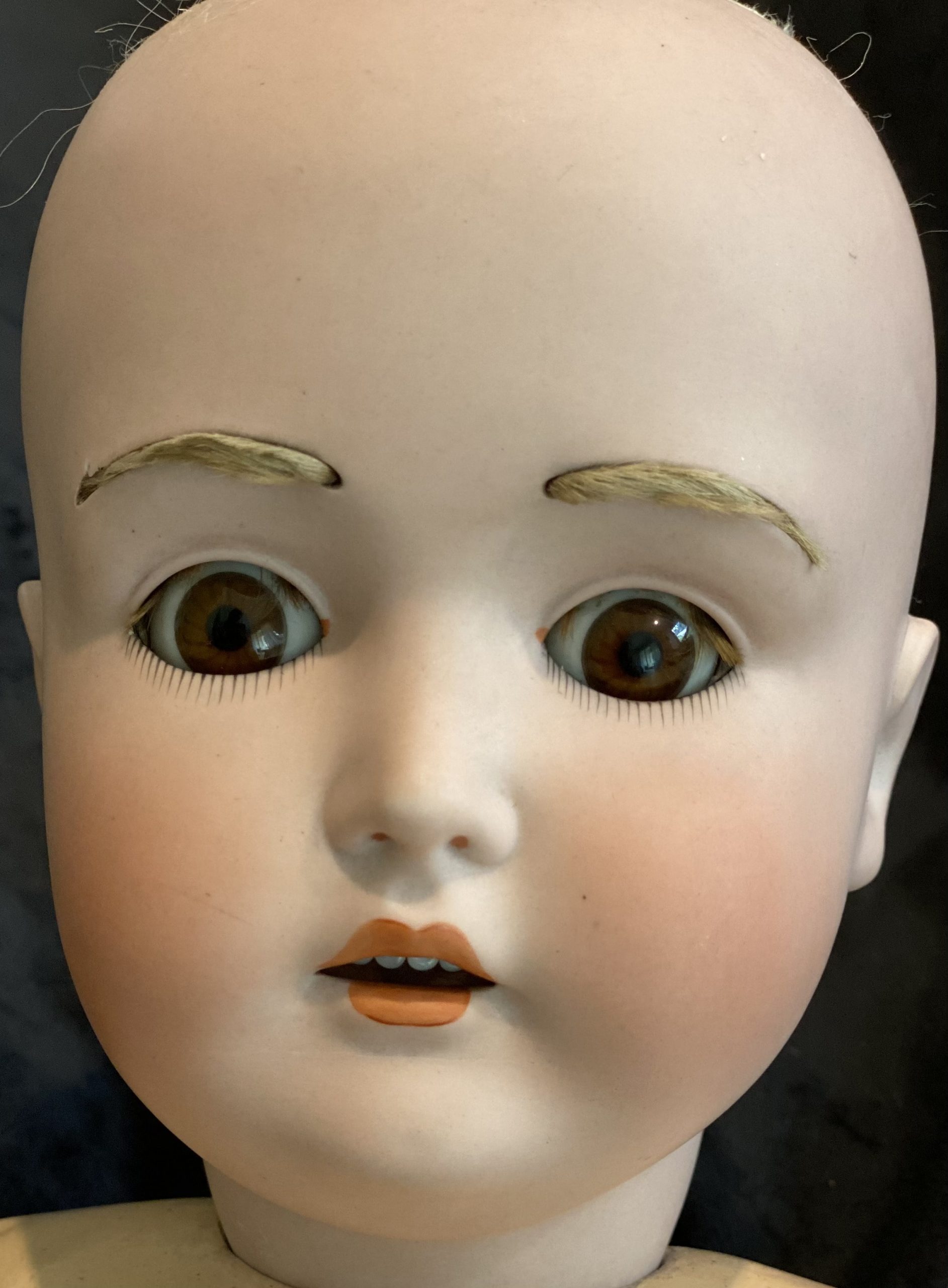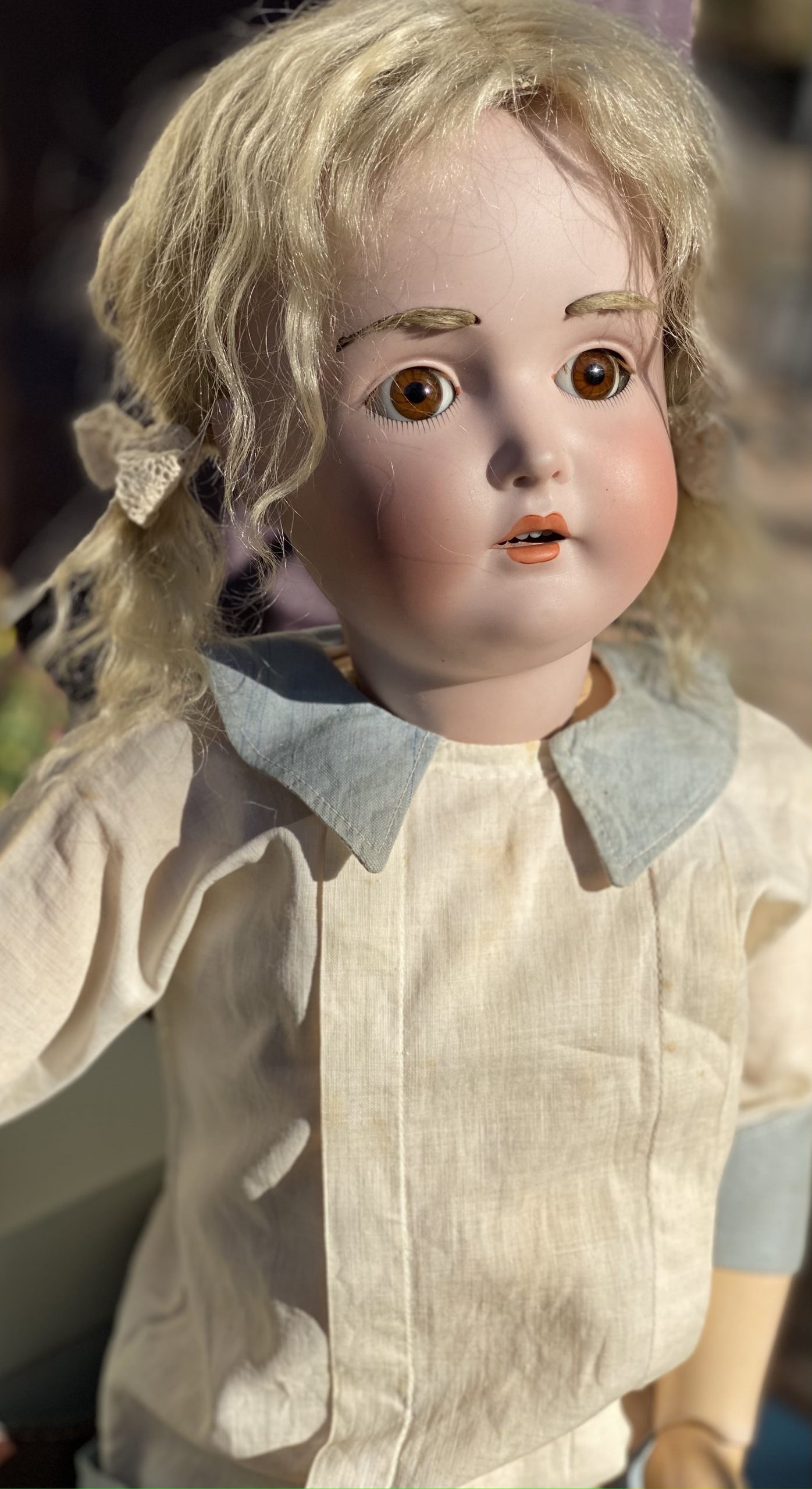Kestner 196
Kestner 196
- Made by: Kestner
- Height: 28 inches
- Weight: 5 lb 3oz
- Head: Bisque
- Eyes: Sleepy, brown, works great
- Wig: Blond
- Hairline: NO
- Chips: NO
- Head Mark: K 1/2 Made in Germany 14 1/2. 196
- Body: Composition, marked Germany 5 1/3
- Arms: Composition
- Legs: Composition
- Fingers: missing one finger
- Dress: Good condition, a little dirty because of the time
- Underlinen: silk, a little bit aged but still very cute
- Shoes: Antique,Brown color
600$
Description
Kestner 196 – fither brows
It is always a pleasure to list a Kestner doll because of their beauty and high quality. They always have very good bisque and excellent face painting. This example is 25.5 inches tall. It has a stamp that states, “K 1/2 Made in Germany 14 1/2″. 196”. She has a pate and a mohair wig. Her ball joint body has marked “Germany 5 1/3”, In good condition for age, with slight signs of wear on the joints. She has an opening and closing eye mechanism. Her eyes are brown with painted lower lashes and partially painted upper eyelashes. She also has unusual, real eyebrows(see picture on left-small chip). Her bisque head has no damage and her coloring is light and delicate with blushed cheeks. Her mouth is full of Kestner’s upper teeth. She is a seldom-seen mold number. Also, she wears antique clothes. Her dress is a little dirty because of the time, but still beautiful. The undergarments are silk, a little bit aged but still very cute. The shoes are slightly damaged, but still original )) This wonderful lady has a missing finger on the left hand and a micro-small chip on the left eyebrow, which is easy to repair. Additional photos on request. See pictures.
Kestner JDK Dolls 1820-1938 German
King of Doll Makers – Johann Daniel Kestner (JDK) of Waltershausen, Thuringia, Germany began making papier mache and wood dolls and toys as early as 1816. Kestner eventually went on to employ nearly three-quarters of the inhabitants of the Waltershausen region which earned him the nickname “King Kestner”.
In 1858 J.D. Kestner passed away and his grandson Adolf eventually took over the running of the company, around 1860 Kestner produced wax over papier mache doll heads, by 1860 they acquired the Ohrdruf porcelain factory and began to produce the bisque dolls known by collectors today. Kestner was one of the few German doll makers to produce the entire doll – head and body.

